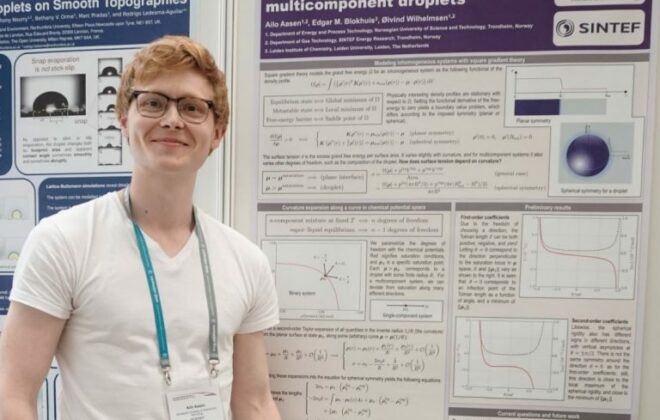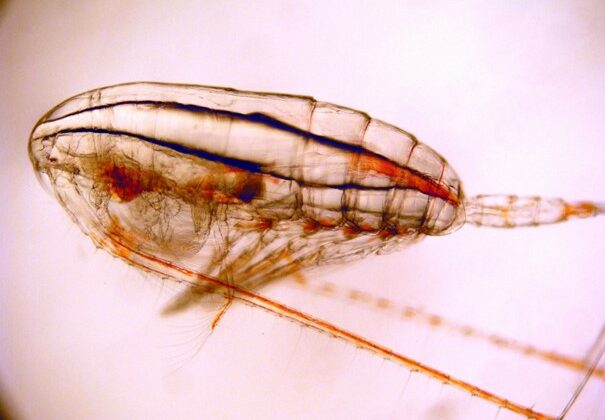Trondheim – building the foundation for the green transition
For the first time, a major European research infrastructure project is being led by a country from outside the EU. Trondheim has now become the EU capital of carbon management research, and we have no qualms about emitting just a few grammes of sparkling CO2 in celebration. Starting in June 2017, more than 50 laboratories in five European countries will be coordinated from Trondheim.
Three celebrations in one – an EU project, new laboratories, and the 100th anniversary of our hydropower lab
On Monday 12 June, NTNU and SINTEF announced a Kinder Surprise Egg of green technology celebrations. Trondheim is making a name for itself as a new European research capital for climate change technology, now that NTNU and SINTEF have been jointly awarded coordinator status for the European CCS infrastructure project ECCSEL ERIC.
Key to this award are the new, upgraded laboratories at Gløshaugen, where investments totalling about half a billion kroner have been made during the last six to seven years to build an infrastructure that will form the foundation for technology development that is essential if we are to implement a successful green transition. The project is being funded by both Norway and the EU. We are also celebrating the contribution made by NTNU to Norway’s renewable hydropower industry during the last 100 years. The hydropower laboratory has been key to the growth of Norwegian industrial sectors powered by clean electricity.

Green technology capital
“Trondheim is making a name for itself as the green technology capital of Europe”, says NTNU Rector Gunnar Bovim. “This is a major vote of confidence, and we’re looking forward to getting to grips with the project. I can’t think of a better way of celebrating 100 years of energy research in Trondheim than by opening new laboratories that will provide our 1400 energy researchers with the opportunity to tackle some of our biggest contemporary challenges, in partnership with our colleagues from all over Europe”, he says.
“This celebration affirms two important facts – that international collaboration and investment in research and innovation are the recipe for meeting the targets set by the Paris Agreement and implementing the green transition”, says Bovim.
Climate change technology that generates wealth and jobs
“Climate change technologies are being rolled out faster than ever”, says SINTEF CEO Alexandra Bech Gjørv. “Such technologies can create jobs and are crucial if we are to meet our climate change targets. CCS is one of the most important technologies where Norway can make a contribution, and without CCS we will fail to meet the targets set out in the Paris Agreement. We also need research and innovation in order to make CCS solutions smarter, more robust and less expensive”, she says.
The fundamental idea behind a large-scale joint laboratory infrastructure project such as ECCSEL is that in order to succeed, we must work uninhibited by national boundaries. All countries must make a contribution.
“I consider it an honour that NTNU and SINTEF have been chosen to lead this European project”, says Bech Gjørv. “The ECCSEL project demonstrates that the Norwegian collaboration model, involving academia, research institutes and the public authorities, produces positive results”, she says.
See also:
Facts:
- CCS: “Carbon Capture and Storage”. Technology for the capture and storage of carbon dioxide.
- ECCSEL ERIC: “European Carbon Dioxide Capture and Storage Laboratory Infrastructure”. An independent European consortium with its head office at NTNU/SINTEF in Trondheim, Norway.
This blog post was originally published on June 12th, 2017 on www.ntnutechzone.no
Tags In
Search
Søk
Categories
- Arctic Research
- Arkitektur
- Bærekraft
- Bioingeniørfag
- Biologi
- Biology
- Biomedical Laboratory Science
- Biotechnology
- Bioteknologi
- Chemical Engineering
- Chemistry
- Climate
- Computer Science
- Datateknologi
- Digital
- Elektronikk
- Energi
- Energi
- Energy
- Engineering
- Engineering
- Environment
- Food Science
- Forskning
- Fysikk
- Fysikk
- Havbruk
- Informasjonsteknologi
- Informasjonsteknologi
- Ingeniørvitenskap
- Kjemi
- Kjemisk prosessteknologi
- Kjemisk prosessteknologi
- Kreftbehandling
- Kybernetikk
- Marine Technology
- Materialer
- Materials Science
- Materialteknologi
- Matvitenskap
- Meninger
- Miljø
- Min ph.d.
- My PhD
- My PhD
- My postdoc
- Nanotechnology
- Nanoteknologi
- Ocean
- Oil and gas
- Physics
- Research
- Simulering og visualisering
- Spør en forsker
- Studentliv
- Sustainability
- Ukategorisert
- Universitetsliv
- University Life
Kategorier
- Arctic Research
- Arkitektur
- Bærekraft
- Bioingeniørfag
- Biologi
- Biology
- Biomedical Laboratory Science
- Biotechnology
- Bioteknologi
- Chemical Engineering
- Chemistry
- Climate
- Computer Science
- Datateknologi
- Digital
- Elektronikk
- Energi
- Energi
- Energy
- Engineering
- Engineering
- Environment
- Food Science
- Forskning
- Fysikk
- Fysikk
- Havbruk
- Informasjonsteknologi
- Informasjonsteknologi
- Ingeniørvitenskap
- Kjemi
- Kjemisk prosessteknologi
- Kjemisk prosessteknologi
- Kreftbehandling
- Kybernetikk
- Marine Technology
- Materialer
- Materials Science
- Materialteknologi
- Matvitenskap
- Meninger
- Miljø
- Min ph.d.
- My PhD
- My PhD
- My postdoc
- Nanotechnology
- Nanoteknologi
- Ocean
- Oil and gas
- Physics
- Research
- Simulering og visualisering
- Spør en forsker
- Studentliv
- Sustainability
- Ukategorisert
- Universitetsliv
- University Life


